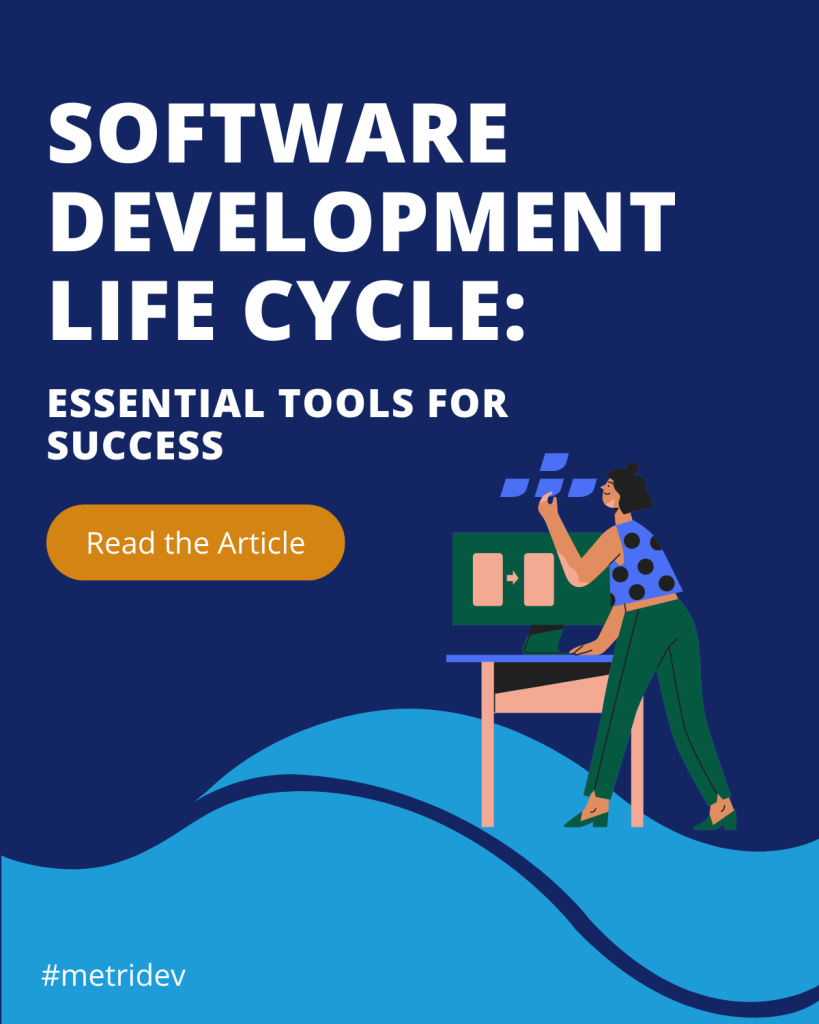Introduction
The software development life cycle (SDLC) is a systematic approach to developing software that ensures high-quality and efficient project delivery. SDLC best practices are essential for the success of any software development project, as they provide a framework for effective planning, execution, and delivery. This article will explore the importance of SDLC best practices, the agile SDLC approach, the best practice framework, the best methodology to adopt in SDLC, the seven phases of SDLC, and the best practices for each phase. It will also address common challenges faced during the SDLC process and provide strategies to overcome them.
What Are SDLC Best Practices?
SDLC best practices refer to a set of proven methodologies, guidelines, and principles that help organizations achieve successful software development projects. These practices ensure that software development projects are completed on time, within budget, and with the desired quality. Best practices in SDLC encompass all aspects of the development process, including planning, requirements gathering, design, development, testing, deployment, and maintenance. By following these best practices, organizations can minimize risks, improve efficiency, enhance communication among stakeholders, and deliver high-quality software products.
Importance of SDLC Best Practices
Adhering to SDLC best practices is crucial for the success and sustainability of software development projects. These practices provide a structured approach that enables teams to manage projects effectively, meet customer expectations, and deliver high-quality software products. By following best practices, organizations can reduce project failures, avoid costly rework, and improve overall project outcomes. SDLC best practices also promote collaboration and alignment between various stakeholders, including developers, testers, project managers, and clients, leading to enhanced communication, increased productivity, and improved customer satisfaction.
Agile SDLC Best Practices
Agile SDLC best practices revolve around delivering working software in short iterations, continuously collaborating with customers, and adapting to changing requirements. Some key best practices in agile SDLC include:
1. Iterative Development: Breaking the project into small iterations or sprints allows for regular feedback and flexibility in incorporating changes.
2. Regular Communication: Frequent communication between team members, stakeholders, and customers helps to ensure alignment and resolve any issues promptly.
3. Continuous Integration: Integrating code frequently and running automated tests helps in early detection of defects and ensures a stable software product.
4. Prioritization: Prioritizing requirements and focusing on delivering high-value features early allows for quicker time-to-market and customer satisfaction.
5. Retrospectives: Conducting regular retrospectives after each iteration helps identify areas of improvement and allows teams to adapt and evolve.
SDLC Best Practice Framework
A best practice framework is like a guide for organizations to do software development well. It helps keep things consistent and successful by making processes standard. Even though each organization might have its own way of doing things, there are some important parts that are usually included. Governance and oversight set up how decisions are made and who’s in charge. Process definition makes sure things are clear and standardized in each step of software development, like planning, gathering requirements, designing, developing, testing, deploying, and maintaining. Also, using documentation and templates helps keep things consistent and makes it easy to share knowledge. Quality assurance processes, like checking the code and testing, make sure the software is high-quality. Lastly, risk management is important for identifying, assessing, and dealing with risks throughout the project.

What Is the Best Methodology in SDLC?
The choice of the best methodology in SDLC depends on various factors, including project requirements, team size, complexity, and organizational culture. Some popular SDLC methodologies include:
1. Waterfall: The waterfall methodology follows a linear sequential approach, where each phase is completed before moving to the next. This methodology is suitable for projects with well-defined requirements and minimal changes expected during the development process.
2. Agile: Agile methodologies, such as Scrum and Kanban, emphasize iterative and incremental development, customer collaboration, and adaptability to changing requirements. Agile methodologies are best suited for projects with evolving requirements and a need for frequent customer feedback.
3. Lean: The lean methodology focuses on reducing waste, optimizing processes, and maximizing value for the customer. It aims to deliver software products with minimal resources and effort.
4. DevOps: DevOps combines development and operations, aiming to improve collaboration, automation, and efficiency throughout the software development and deployment process. DevOps methodologies are suitable for projects that require continuous integration, delivery, and deployment.
What Are the Phases of SDLC?
The software development life cycle consists of seven key phases, each with its own set of activities, deliverables, and best practices:
Planning and Requirements Gathering
In the planning and requirements gathering phase, we need to understand what the project is about, set goals, and get input from everyone involved. Important tasks include checking if the project is doable, making a plan, spotting risks, and writing down what’s needed.
In this phase, it’s vital to use the best methods to make everything run smoothly.
First, figure out who is involved by analyzing stakeholders. This helps in knowing what everyone wants. Then, set clear and measurable goals to guide your work. Also, check if the project is possible and identify potential problems. This makes sure you’re ready for challenges. Lastly, write down what’s needed in an organized way using tools like use cases or user stories. This keeps things clear and helps track project requirements.
Design and Architecture
In the design and architecture phase, the system’s architectural design and detailed design specifications are developed. This phase involves creating high-level and low-level design documents, selecting appropriate technologies, and defining the system’s overall structure.
In this phase, it’s important to adopt best practices that contribute to a smooth and efficient process.
Start by following modular and scalable design principles, ensuring flexibility and making maintenance easier down the road. Conduct architectural reviews to validate the design against project requirements, ensuring alignment and accuracy. Utilize design patterns and industry best practices to optimize the system’s performance and maintainability, ensuring that your project benefits from proven strategies. Don’t forget to document design decisions and rationale, as this documentation serves as a valuable resource for future maintenance and enhancements. This way, you’re setting the groundwork for a well-structured and sustainable system.

Development and Coding
The development and coding phase involves transforming the design specifications into actual code. This phase focuses on writing clean, efficient, and maintainable code while adhering to coding standards and best practices.
Best practices for this phase include:
Using version control systems to manage code changes and enable collaboration among developers. Following coding standards and style guidelines to ensure consistency and readability of the codebase. Conducting code reviews to identify and fix potential bugs, security vulnerabilities, and performance issues. Writing automated unit tests to validate the correctness of the code and ensure future maintainability.
Testing and Quality Assurance
The testing and quality assurance phase aims to identify defects, validate the functionality of the software, and ensure its quality. This phase involves various types of testing, including unit testing, integration testing, system testing, and user acceptance testing.
In this phase, it’s crucial to adhere to best practices that contribute to a robust software development process.
Start by developing comprehensive test plans and test cases, ensuring coverage of all aspects of the software’s functionality. It’s essential to conduct both manual and automated testing to guarantee thorough test coverage and catch potential issues. Implementing continuous integration and continuous testing practices is key for early defect detection, maintaining a reliable development workflow. Additionally, conducting performance testing and security testing is essential to validate the software’s performance and security measures. By following these best practices, you’re setting the stage for a well-tested and secure software product.
Deployment and Implementation
The deployment and implementation phase involves deploying the software to the production environment and making it available to end-users. This phase requires careful planning, coordination, and testing to ensure a smooth transition from the development environment to the production environment.
Best practices for this phase include:
Conducting a pilot deployment to a subset of users to validate the software’s functionality and gather feedback. Creating deployment scripts and automating the deployment process to reduce errors and ensure consistency. Conducting user training and providing comprehensive documentation to assist users during the transition. Monitoring the software’s performance and addressing any issues or bugs that may arise during the initial deployment.
Maintenance and Support
The maintenance and support phase involves ongoing support and maintenance of the software product after its deployment. This phase includes bug fixes, enhancements, performance optimization, and addressing any user-reported issues.
In this phase, it’s important to follow best practices for a successful outcome.
Begin by establishing efficient processes for bug tracking, issue resolution, and change management. This ensures a smooth workflow and addresses problems promptly. Additionally, conducting regular system audits and performance monitoring is crucial to identify areas for improvement in the system. Gathering user feedback and prioritizing enhancements based on customer needs helps in aligning the development with user expectations. Furthermore, documenting known issues, workarounds, and maintenance activities is essential for future support and maintenance, providing a helpful reference for ongoing operations.
Common Challenges in SDLC and How to Overcome Them
Despite following SDLC best practices, software development projects may face several common challenges. Some of these challenges include:
1. Unclear or Changing Requirements: To overcome this challenge, it is essential to have a robust requirements gathering process that involves continuous engagement with stakeholders. Regularly reviewing and validating requirements with stakeholders throughout the project can help identify changes early and manage them effectively.
2. Poor Communication and Collaboration: Effective communication and collaboration among team members, stakeholders, and clients are crucial for project success. Establishing clear communication channels, conducting regular meetings, and using collaboration tools can help overcome communication challenges.
3. Scope Creep: Scope creep refers to uncontrolled changes or additions to the project scope. To manage scope creep, it is important to have a formal change management process in place that evaluates the impact of changes on the project timeline, budget, and resources.
4. Resource Constraints: Limited resources, such as budget, time, or skilled personnel, can pose challenges during the SDLC. Careful resource planning, prioritization, and leveraging external resources or outsourcing can help overcome resource constraints.
5. Technical Challenges: Technical challenges, such as integration issues, performance bottlenecks, or scalability concerns, can impact project success. Conducting thorough technical assessments, prototyping, and involving
subject matter experts can help address these challenges effectively.
Conclusion
SDLC best practices are essential for delivering successful software development projects. By following a structured approach, organizations can minimize risks, improve efficiency, and deliver high-quality software products. Whether following an agile or waterfall methodology, implementing a best practice framework, or addressing common challenges, adhering to SDLC best practices will contribute to project success. By adopting these best practices, organizations can enhance collaboration, mitigate risks, and ensure that software development projects meet customer expectations, resulting in successful and sustainable outcomes.
Learn more about implementing these practices and achieving your software development goals, read our article about Engineering Management vs. Project Management.
IT METRICS TO BECOME AN EXPERT















Leave a Reply